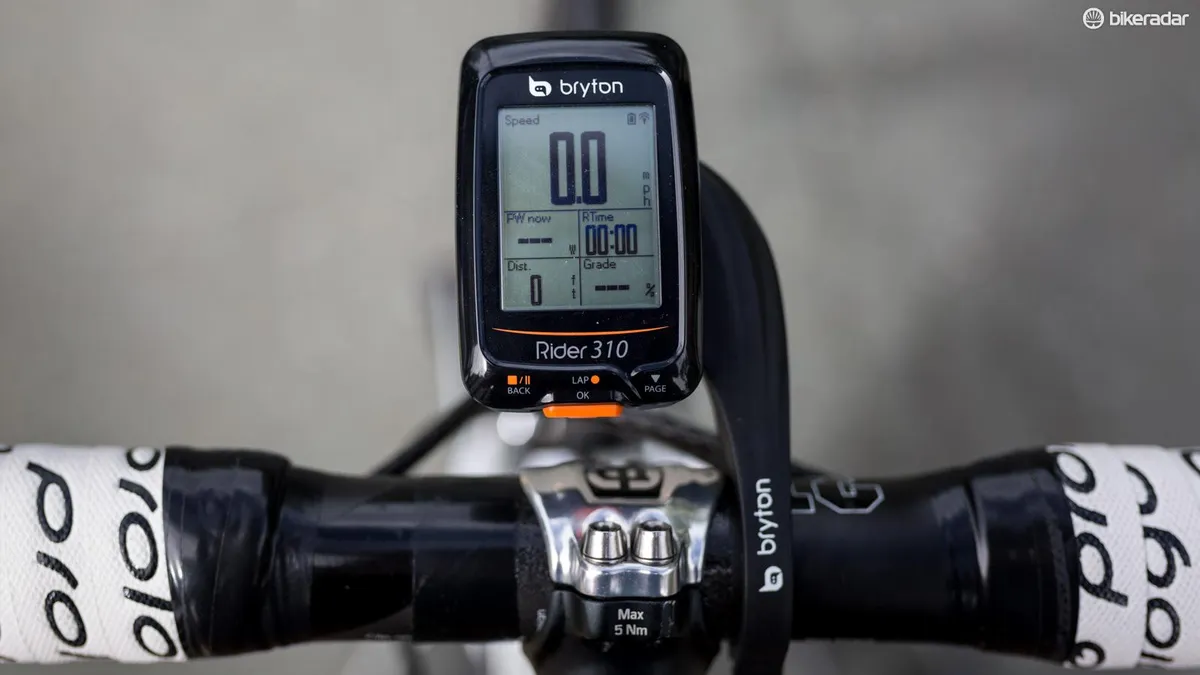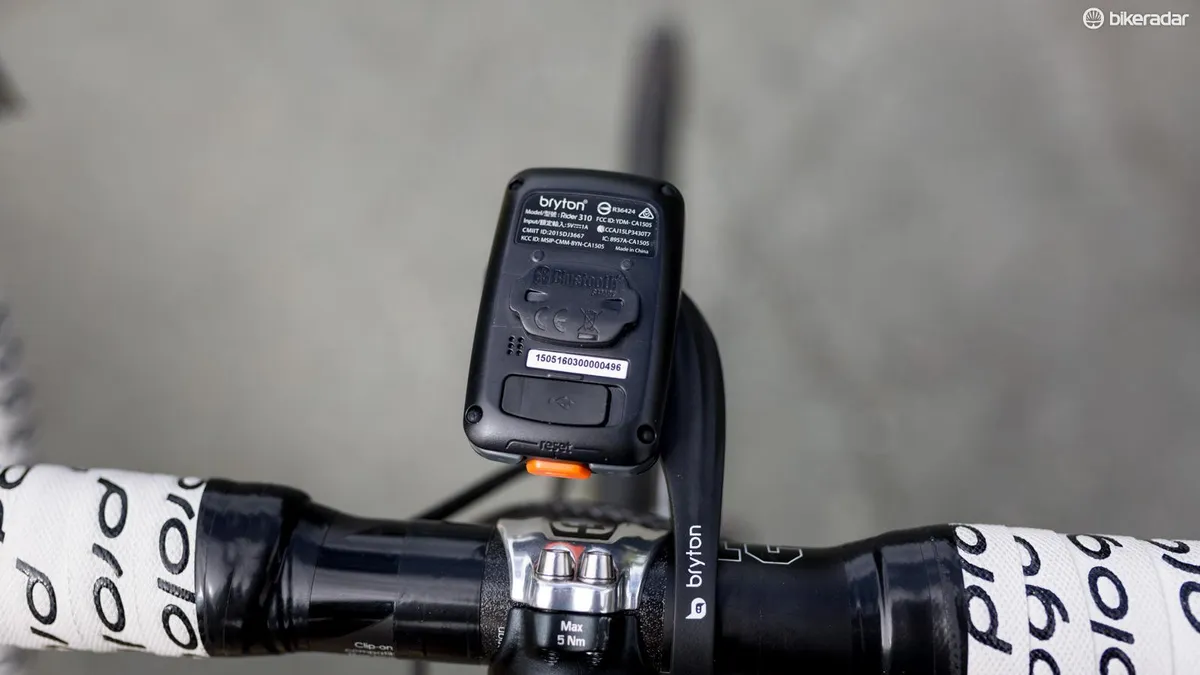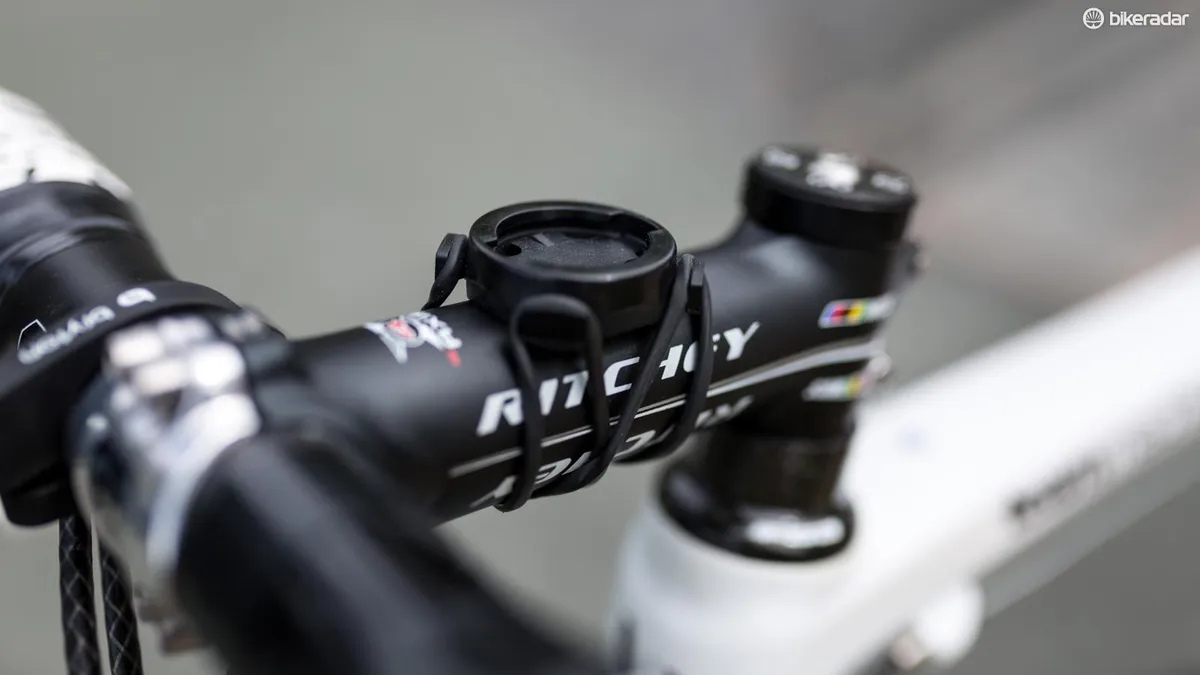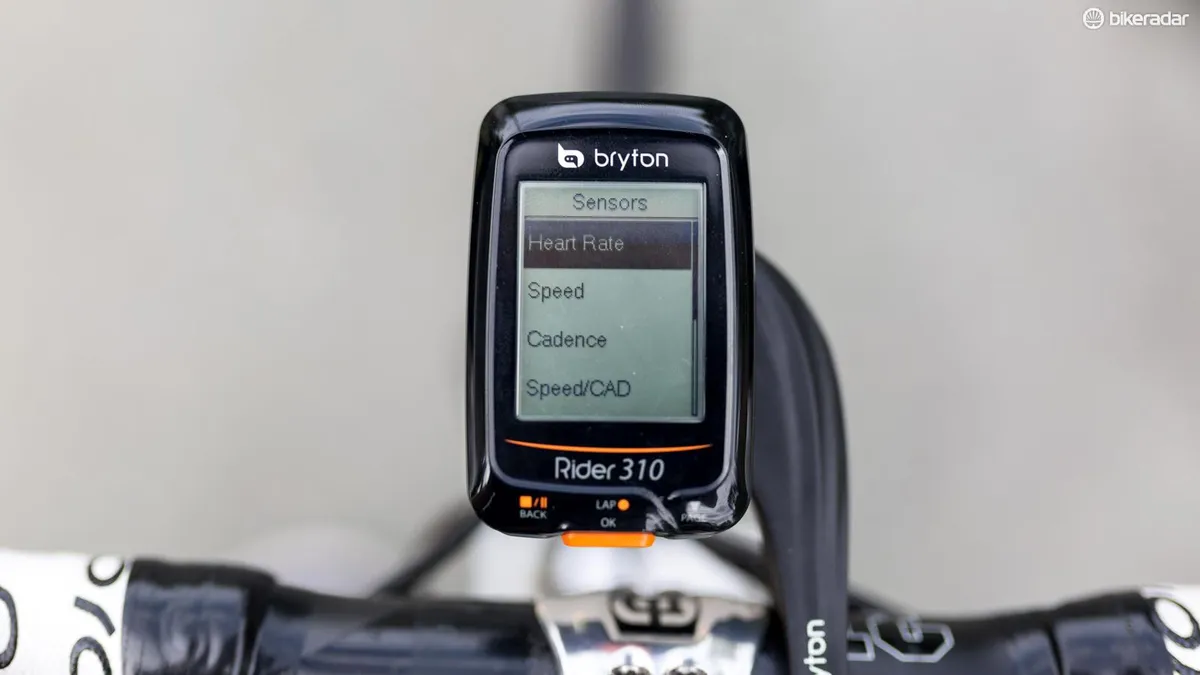With Garmin’s stranglehold on the cycling computer market, brands making head units have to make a concerted effort to compete. With that said, Garmin's computers are not perfect and some brands like Bryton are capitalising on this fact to take their own slice of the pie.
The nitty gritty
The Rider 310 is roughly the same size as a Garmin Edge 500 and offers a similar feature set. Weighing just 53g the head unit sees a 1.8in (4.6cm) high contrast black and white display and measures 1.8in x 2.7in x 0.7in (45.1mm x 69.5mm x 17.3mm).
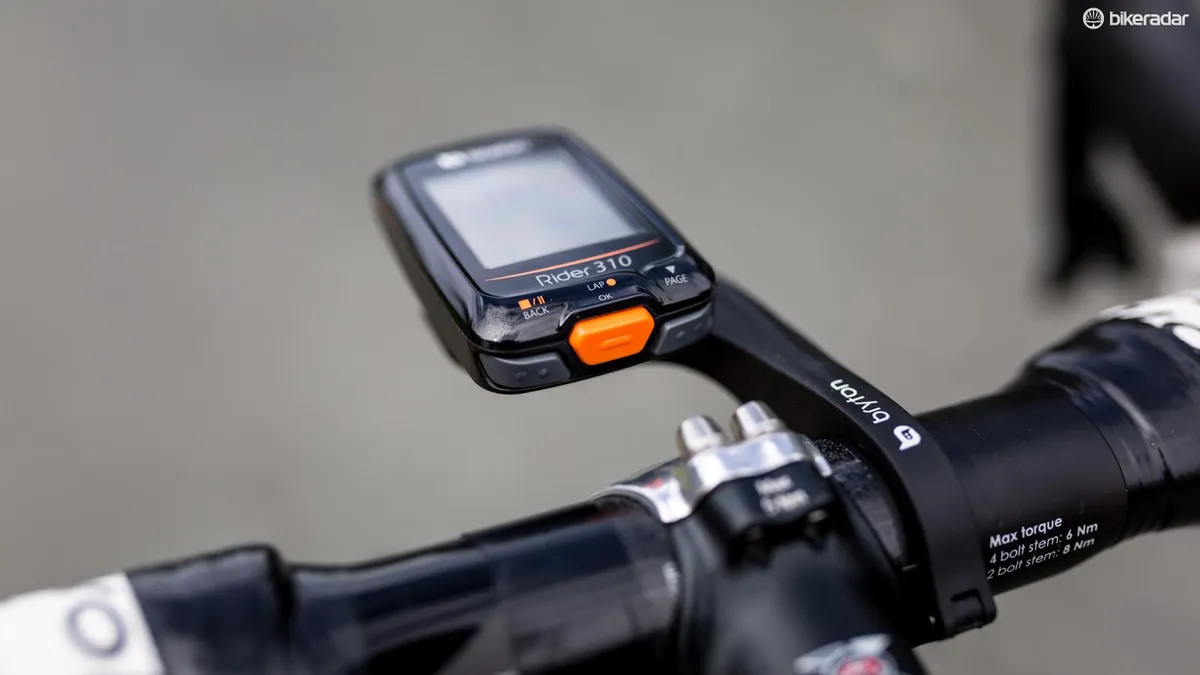
With its small form factor, Bryton has opted to use three small buttons (one orange and two grey) along the bottom edge of the computer. Being used to Garmin's button set up and interface, this caused a bit of frustration while trying to navigate the device's menus but it’s definitely something that could be learned with time.
As with any modern cycling computer, the Rider 310 is GPS-enabled and sees wireless connectivity sensors via an ANT+ connection. There’s also Bluetooth connectivity, however it can only be used to connect to a smartphone for on-screen notifications and wireless ride uploads. The Rider also sees built-in sensors monitor altitude temperature and gradient.
While the unit doesn’t offer automatic uploads, as some of its competitors do, rides can be synced through Bryton's new app or via a USB cable directly to the training software of your choice — the Bryton app also allows automatic Strava sync.
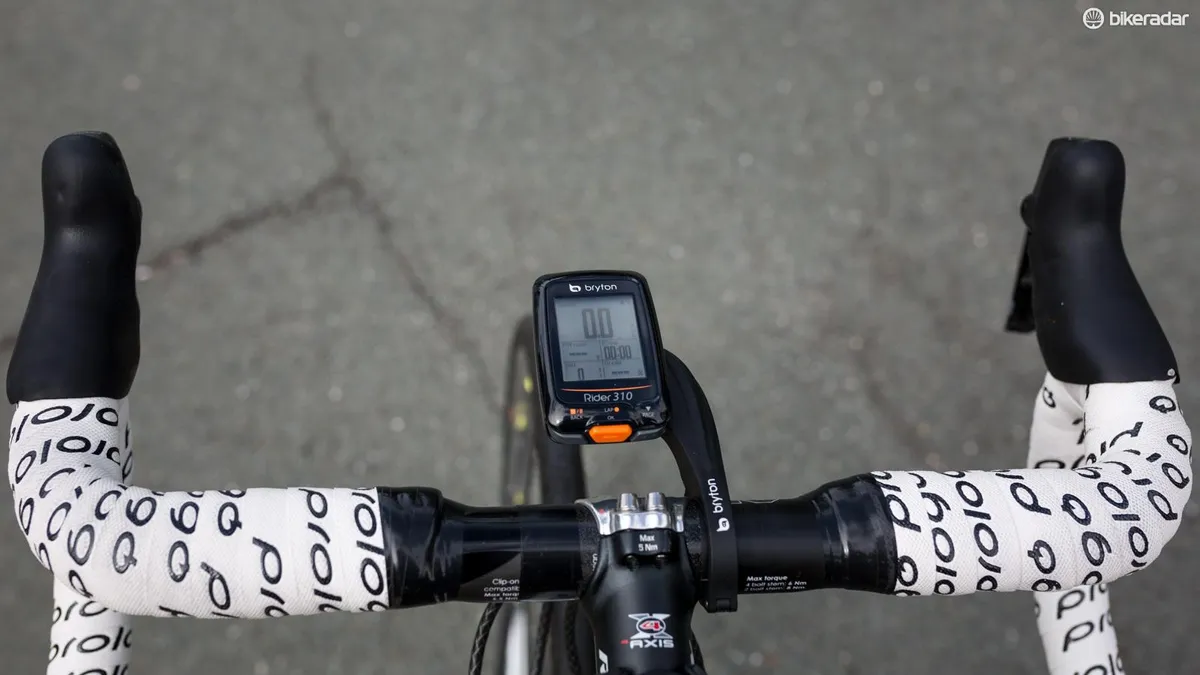
With only enough internal memory for 300-hours of ride data, once full the 310 will overwrite the oldest data stored on the device — so it’s not for those who use their head unit to keep track of yearly totals, and yes these people do exist, and no they don’t live on the dark side of the moon.
For those with daily prescribed workouts, you can create simple workouts based on time or distance or create specific intervals based on power or heart rate directly on the device. There's also pre-programmed workouts to determine max heart rate, FTP, lactate threshold and max anaerobic power.
While the 310 does record your ride using GPS it lacks mapping capabilities (even the breadcrumb style navigation as seen on many budget friendly head units), but this is part of the reason it’s able to hit such a low price point with Bryton needing the least amount of internal hardware. Although this is not a feature that we often use, nor was it missed, it's still a nice to have — especially if you’re exploring a new locale. Due to the lack of mapping, the 310 records .fit files instead .gpx.
It’s all about the data
In all, the Rider 310 can record up to 70 metrics, and can display seven pages of up to eight metrics each — the little device will satisfy even the most data-hungry among us.
With the ANT+ connection the 310 also supports data from power meters and can display current, three-second, 10-second power readings, normalized power, intensity factor, training stress score (TSS), and Left-Right balance — for those riding with dual side power meters — and we had no trouble pairing a Stages unit as well as third-party heart rate and speed and cadence sensors.
As more and more people are now adding power meters to their training the 310 can help you get the most out of your unit.
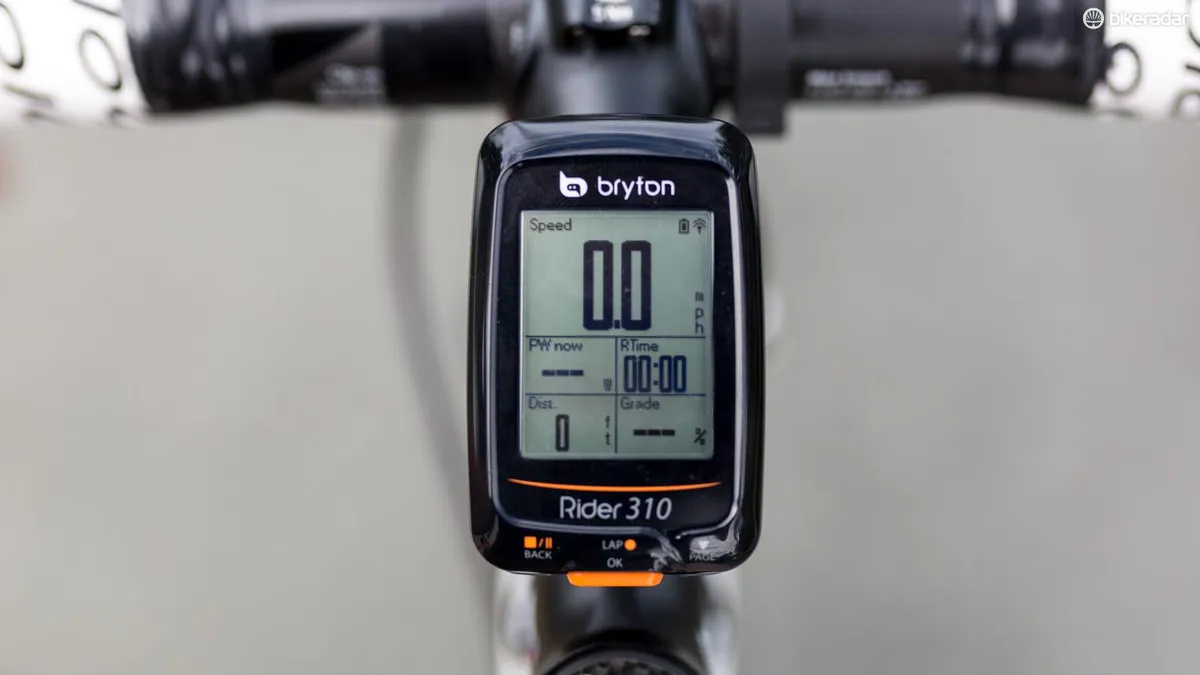
Quite a cool feature is the automatic display where the computer will only display relevant metrics. So if there is no power meter connected the unit won’t display a blank field on the screen. Because of this it was unnecessary to customise the data screens — once we’d paired a sensor it automatically popped up on the front page.
While our test unit was the standalone Rider 310, Bryton tells us that if you purchase the speed and cadence sensor, and heart rate strap with the computer they’ll be pre-paired with the computer, so you're ready to go literally out of the box.
The Rider 310 utilises the ever familiar quarter-turn mounting system, but it's just a little bit different to Garmin's and although the Rider 310 will fit in most Garmin mounts, it’s not a good fit and over time would likely damage the wings.
Bryton provides the unit with a basic bar or stem mount that’s attached with rubber O-rings, however, Bryton also provided us with its out in-front mount. It's made from sturdy plastic and the single bolt and hinge design made for painless installation.
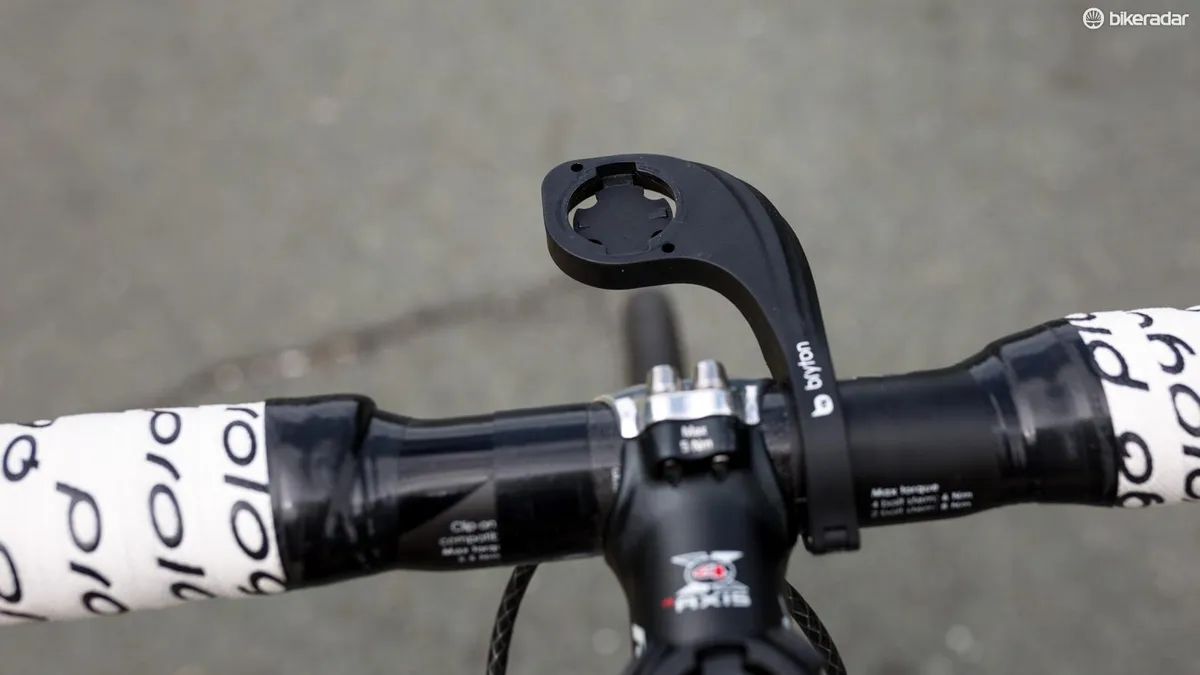
The battery life is one of the best we’ve come across and is very much in line with the claimed 36 hours, even with full power GPS — more than doubling the Edge 520's claimed 15-hours and the Edge 820's claimed 24-hours in Ultratrack mode. You never have to charge this thing and it’s actually quite a surprise when the low battery warning does pop up on the screen.
The computer was mostly reliable, finding a satellite signal almost instantly, however on some occasions it took over five minutes to acquire a signal. Despite this, our tester has had the same trouble with units from Garmin and Suunto (which also have access to the GLONASS network), so it’s more than likely his location and the orientation of the satellites at that time rather than the units themselves.
Final thoughts
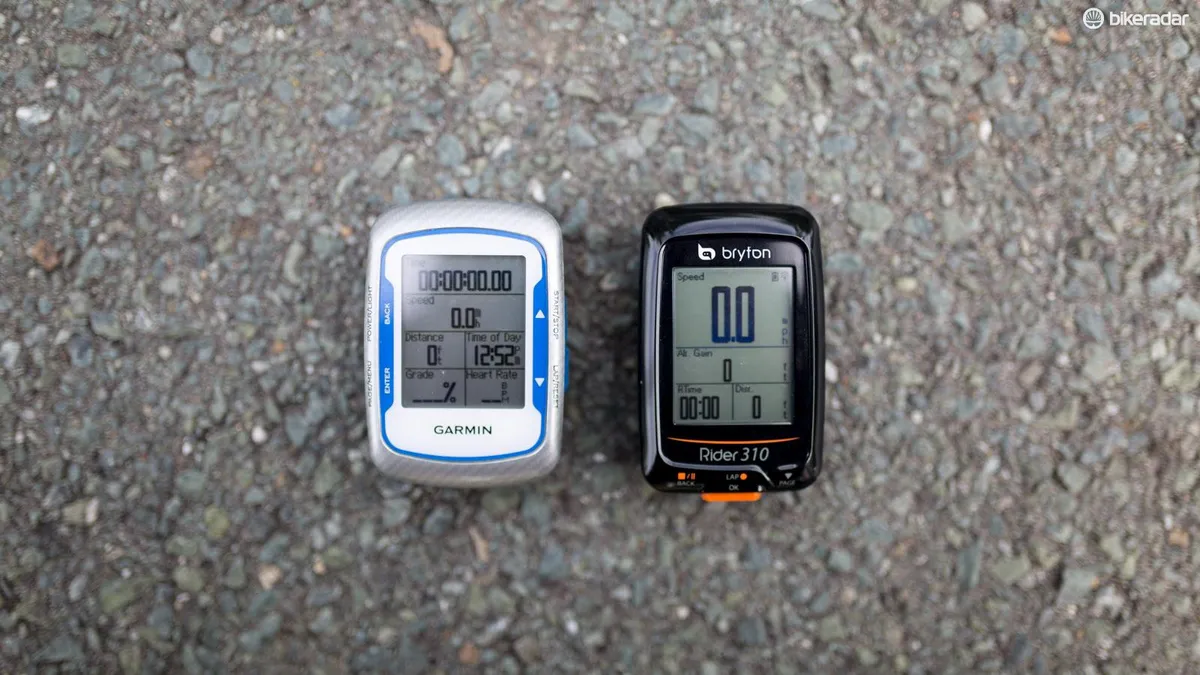
Overall, the Bryton Rider 310 is a surprisingly powerful computer in a compact and extremely budget friendly package. No, you don’t get things like navigation, mapping, Strava Live segments or Garmin's educated guesstimates on V02 max and recovery, but the 310 costs less than half of the head units that offer these features at £117 / US$120 / AU$150.
With the ability to display accurate basic metrics like speed and distance as well as more advanced metrics like normalized power and TSS, Bryton has hit a homerun with the 310 and for those who are just interested in data, not navigation, it’s hard to overlook the Rider 310.

